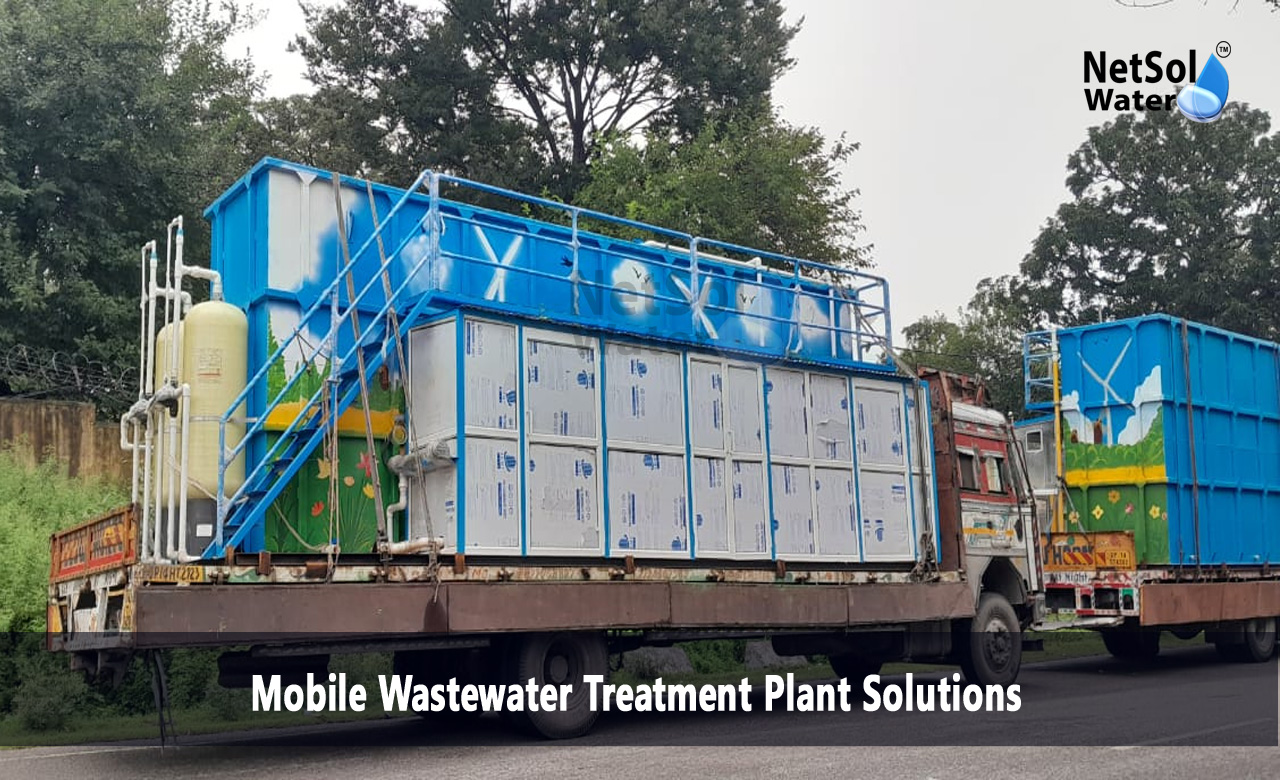Mobile Wastewater Treatment Plant Solutions
Mobile Wastewater Treatment Plant Solutions bring clean water where fixed systems cannot reach. These systems move to the site and treat water on demand. They help work sites, disaster areas, remote towns and temporary events. Mobile units use modular tanks, pumps and filters to remove solids, organics and pathogens. Skilled teams set up the units and start treatment within hours. This speed lowers risk and keeps projects moving. Mobile systems also cut the need to haul waste over long distances for treatment. They conserve time and reduce logistics costs while keeping people safe.
Types and Configurations
Mobile plants come in many forms and each form fits a different need. Let us have a look on some common types and how they serve distinct goals.
Containerized Units
Containerized units use standard shipping containers for housing equipment. They ship easily and plug into site power. Teams move these units by truck and set them on simple foundations. They scale by adding more containers when flow grows.
Trailer-Mounted Systems
Trailer mounted systems attach to road trailers for fast tow and setup. They work well where roads reach the site. These units often handle smaller flows and they fit temporary jobs. Operators can hitch them and move within a day.
Skid-Mounted Modules
Skid mounted modules sit on frames for forklift or crane movement. They fit sites that need modular upgrade or relocation. Teams swap modules for extra treatment steps and they keep service running during changeovers.
Design and Components
Good design makes a mobile plant safe and simple to run. Let us have a look on some key parts and how they function together.
Pretreatment and Screening
Pretreatment removes large solids and sand. Screens and grit traps protect pumps and later filters. This step keeps the whole system running longer and with less repair.
Biological Treatment
Biological tanks use bacteria to break down organic matter. Sequencing batch reactors and moving bed reactors work in compact layouts. They reduce biochemical oxygen demand and prepare water for final polishing.
Filtration and Disinfection
Filters and disinfection make the final water safe for reuse or discharge. Sand filters, membrane filters and ultraviolet lamps remove remaining particles and pathogens. These steps meet local limits and lower environmental impact.
Benefits and Applications
Mobile plants solve many problems on short notice and over long projects. Let us have a look on some common benefits and places where these systems work best.
Rapid Deployment
Rapid deployment keeps work on schedule and prevents delays from missing treatment capacity. Teams arrive set up and start treatment quickly. This speed proves critical after storms or in emergency relief missions.
Cost-Effective for Temporary Needs
For short projects mobile plants lower the cost of building a fixed plant. Owners avoid long term capital expense when they only need service for months. Leasing options further reduce upfront cost and provide flexible terms.
Versatility for Remote Sites
Remote mines, camps and construction projects use mobile units when no sewer network exists nearby. Operators tune the system to local water quality and needed output. This makes operations both safe and practical.
Operation and Maintenance
Running a mobile plant needs steady care and clear routines. Let us have a look on some best practices that keep systems reliable and efficient.
Start Up and Commissioning
Start up follows a clear sequence. Operators check all connections, fill tanks and bring pumps online. They monitor key signals and adjust aeration and feed rates until treatment stabilizes.
Routine Checks and Repairs
Daily checks catch issues before they stop treatment. Staff inspect pumps, valves and control panels and they record readings. Planned maintenance keeps spare parts on hand and reduces downtime.
Staff Training and Safety
Training helps crews follow safe handling steps for chemicals and sludge. Clear procedures and simple check lists guide workers during shift change. This reduces accidents and keeps water quality steady.
Environmental Compliance and Safety
Regulation shapes how mobile plants run in each area. Let us have a look on some legal and safety steps to meet rules and to protect people.
Permits and Discharge Limits
Operators must secure permits before they send treated water to rivers or sewers. Local limits set maximum levels for solids, nutrients and bacteria. Mobile units must include testing and reporting to meet these rules.
Sludge Handling and Disposal
Sludge needs safe handling and proper disposal. Plants reduce sludge volume by thickening and dewatering. Teams arrange transport to licensed facilities when needed.
Emergency Preparedness
Plans for spills, power loss and extreme weather keep systems safe. Backup power and spare parts help teams respond fast and avoid the release of untreated water.
Conclusion
Mobile Wastewater Treatment Plant Solutions offer flexible, fast and practical treatment for many uses. These systems reduce project delay, protect public health and save money for short term or remote needs. They work in disaster response, construction sites, temporary events and remote communities. If you need help selecting, sizing or operating a mobile plant, contact our team for clear guidance and a site consultation. Request a consultation to get precise advice for your project and to learn how Mobile Wastewater Treatment Plant Solutions can work for you.
Contact Netsol Water at:
Phone: +91-9650608473, Email: enquiry@netsolwater.com



